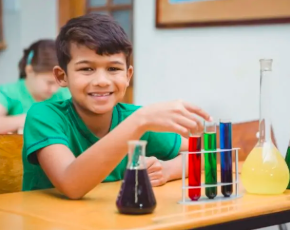Introducing science to preschoolers through playful exploration helps spark curiosity and build early learning skills. By using hands-on activities, teachers can make scientific concepts easy to understand and exciting to discover. Here are several fun and age-appropriate science activities that can transform any preschool classroom into a mini lab of learning.
1. Sink or Float Discovery Station
Create a water-filled bin and provide a variety of objects—plastic spoons, wooden blocks, toy animals, stones, and leaves. Let children predict whether each item will sink or float before testing it. This simple experiment teaches concepts of buoyancy and comparison while encouraging observation and reasoning.
2. Color Mixing with Water
Use clear plastic cups, water, and food coloring to explore primary and secondary colors. Children can mix red, blue, and yellow water to discover green, orange, and purple. This sensory-rich activity builds an understanding of colors, cause and effect, and fine motor skills.
3. Growing Beans in a Bag
Place a damp paper towel and a dry bean inside a clear plastic bag and tape it to a sunny window. Over a few days, children can observe how the bean changes—sprouting roots and stems. This easy activity introduces plant life cycles and the basics of biology in a visual and interactive way.
4. Nature Scavenger Hunt
Take the class outside with a list of natural items to find—like leaves, twigs, rocks, or flower petals. Encourage children to use magnifying glasses to examine their discoveries. This supports early classification skills, appreciation of nature, and environmental awareness.
5. Homemade Volcano
Using baking soda, vinegar, and a few drops of food coloring in a small container, children can watch a bubbly “eruption.” This safe chemical reaction teaches cause and effect and makes science exciting and memorable.
6. Exploring Shadows and Light
Give students flashlights and objects to create and manipulate shadows. They can learn how light changes the shape and size of shadows depending on the angle. It’s a creative way to introduce concepts related to light, positioning, and spatial awareness.
7. Ice Melting Experiment
Provide trays of ice cubes and various materials such as salt, warm water, or sand. Let children predict and test which method melts the ice fastest. This sensory activity teaches observation, temperature differences, and comparison skills.
Why These Activities Matter
Preschool science activities are about more than just fun—they help children develop curiosity, critical thinking, and a love of learning. These foundational skills prepare young learners for future academic success and support overall development in a joyful and inclusive classroom environment.
By keeping science playful, safe, and age-appropriate, educators can foster a lifelong interest in discovery and exploration. Through these simple experiments and nature-based learning opportunities, preschoolers gain confidence in asking questions and making sense of the world around them.














